“We buy the paper clips” by Jesse "J*RYU" Yu
Jesse “J*RYU” Yu wrote an exceptional piece on his Facebook, addressing the state / status of the scene currently in the art toy world - with the primary aim to communicate amongst his peers (and less “consumerism perspective”) in this artist—focused piece - which I have since seeked permission to repost here on TOYSREVIL, in it’s entirety.
DISCLAIMERS: Certain line/paragraph breaks here are of my own edit, and not necessary the writer’s own. Additional of toy-imagery posted here are from myself, and not of the writer’s volition.
“We buy the paper clips” by Jesse Yu
Just wanted to weigh in on the recent chatter about the state of “designer toys” and the scene in general with a perspective that has been developing over the past few years. I don’t really FB too much but I figure that it would be the best platform to share my insights and opinions with the colleagues on here that this issue is affecting the most. Please keep in mind that all observations, viewpoints and statements below are mine, and that the exercise of me writing this is to hopefully foster growth, change and understanding. Also, there is no TL;DR, sorry.
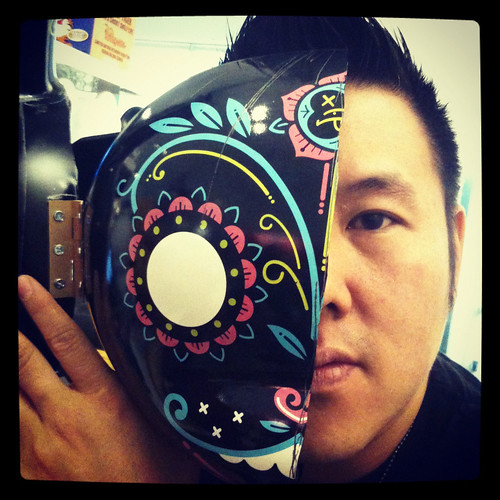
(FANG TO FUR @ FLABSLAB (circa 2012)
Anyways, I’ve been involved in this scene for a fair number of years now. Many of you know the story of how I was a enthusiast and fan who was working in the corporate world, tried my hand at the creating and then eventually migrated fully to a career as an artist. I’ve participated in a number of shows and projects and have gotten to meet a very large number of the people involved with the scene. Throughout it all though, I’ve been able to retain some of the business sensibility that I honed while working in my previous professions. It is an absolute blessing to be able to straddle that line of art and business, especially now when we are at a crossroads as to where our collective futures lie.
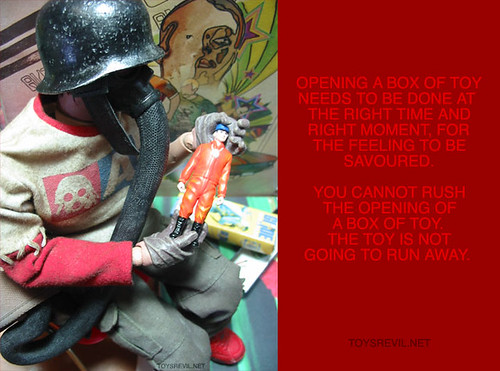
It was a glorious time around 2006-2009, when the collectibles were hitting their stride and the scene was flourishing with release parties, custom shows, convention exclusives and lines for days. Taking their cues from pioneers like Huck, Sket, KOZIK, MAD, JLED, Dalek, Shane Jessup, Tristan Eaton and many many more, lots of artists started to realize that the nascent “toy” scene could be a viable and possibly sustainable source of income.
In the “real” world. As the popularity grew, as the fanbase grew, as the demand grew, so did the businesses to help address the growth. Shops like Kidrobot, Munkyking, ToyTokyo, Wootini, Rotofugi, Myplasticheart, PinkGhost, Dragatomi etc opened their doors to help expose the world-at-large to a new genre of product that combined “art” and “collectible”.
Producers in addition to Kidrobot cropped up like Strangeco and Wheatywheat and Toy2R and many many more to find and produce work by the litany of emerging talent who needed a partner to be able to bring their ideas to life. Online shops like Tenacious Toys, 3DRetro, Frozen Empire Toys etc as well as the dedicated eBay sellers provided even more opportunity for collectors to be able to find the pieces that everyone was clamouring for.
To help spread the word about all of the happenings and releases, fan-originated blogs like Vinyl Pulse, Spankystokes, ToysRevil, Plastic & Plush helped to keep everyone informed and were daily must-reads for everyone. It was a very interesting and exciting time to witness, be a part of and to contribute for everyone.
Fast forward to today. Lots of change. Lots of artists, shops, producers, and blogs have come and gone. Less news. Less hype. Less excitement. Fewer shows. Fewer fans. Abysmal growth and unsuccessful outreach to the public at large. More (warranted) fiscal conservatism in decision making. More difficult decisions made for the sake of survival. I don’t think anyone out there would disagree that the situation for the scene-at-large, if considered empirically, is bleak.
Again, I’m referring to the scene at large. For all of the individual artists who are flourishing or the companies that have been seeing success, they serve as beacons of faint light that we can look to as signs of a pulse. But they too still belong to or emanated from, even by association or focus, the same scene that we are all apart of and trust that I’ve considered their impact in my analysis.
I’ve had many a long discussion over the years with colleagues about what is impeding us in terms of why this scene seemed to peter off or why a subculture has essentially grown and declined in the span of less than one generation of producers and consumers. I’ve had some talks with those that are perennially optimistic (we need their unfettered enthusiasm), some that are puzzled & confused (their understanding of the situation is usually formulated with missing information), those that are extremely pessimistic (I can understand their frustration) and those who are just ambivalent (but for some reason still stick around, not a bad thing!).
It’s through these talks that has given me a broad perspective as to many of the innate issues that have created a systemic breakdown of the core mechanisms that need to be in place in order for this scene, or any industry to at least be economically viable.
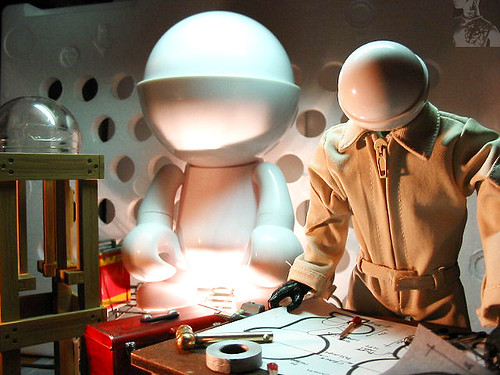
To wit, let me just get this out of the way - I am and call myself a pragmatic creative. My work is not for everyone. I am an unabashed capitalist as long as I am happy with with what I create, in my particular style, with pure intent of creating art that I like, with hopes that others might enjoy it. I feel like i need to get this out of the way first - money + art = good thing. In fact, it’s a great thing. You made something that you think is awesome that you like. Someone wants to buy it and if willing, you sell it. You and the person buying it are both happy.
I can understand if people may be uncomfortable with the notion that involving the idea of money somehow may inadvertently sully their artistic integrity but seriously? Get over it. The idea of commoditizing art for sales as being a sell-out move is an amateurish viewpoint at best if you happen to live, eat, work and participate in a functional society. The antiquated notion that art should be strictly created and exist in a plane where its sole purpose is to invoke an ephemeral, philosophical amorphous cultural exchange/awakening does not apply to us. It just doesn’t.
As an artist, being able to create freely as well as being able to create for an economic return is one of the definitive things that fortify our flexibility and ingenuity as resourceful creatives. The two things are not mutually exclusive. If you have ever hung a piece in a gallery, if you have ever sold a piece to another person for the exchange of money, if you have ever tweeted or posted about your work in any type of publication acknowledging the existence of a new work that you have made - you are in business and with that, comes the need for the acknowledgment of how critical and important it is to incorporate that mentality and acceptance into your career.
Once that happens, then true progress can be individually made by the artist to be smarter about the decisions you are faced with knowing that your desire is to continue on in a tenuous industry. That mentality and approach is just the precursor to being ready to participate. The real issues are more expansive once you get to the dance.
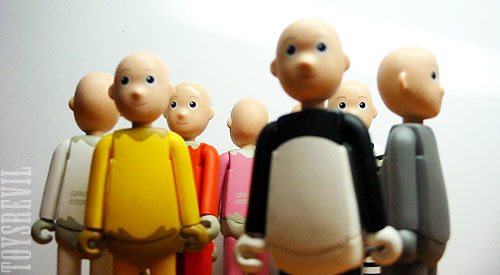
Everyone knows that our scene is essentially a cottage industry of creatives, enthusiasts and producers who loosely came together to form this scene. We cobbled together a space where like-minded people from all over the world rallied around each other and revelled in the work. Pieces were being made, money was being made, and artists were getting known. This was no Hasbro. This wasn’t Mattel. It was people like you and me, making cool shit that was blowing our minds. And with it came money and opportunity and (to very loosely paraphrase Super7’s motto) the idea that we could make the stuff we always wanted but no one made. But since this scene was predicated on the cool-idea-how-do-we-make-this type mentality, the way we have done our accounting for “success” has been flat out wrong.
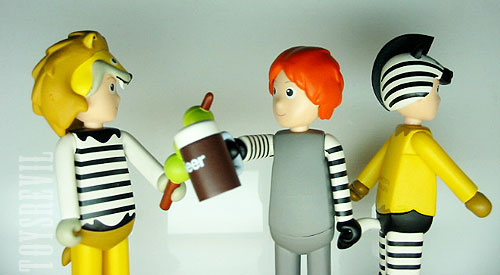
Success in a business is of course measured by earnings. But there are other things to consider that are almost equally important, such as equity and value. As artists, it is imperative that we reconcile what we are creating with a sound business model. Furthermore, we need to be acutely aware of how to assign value to what we create and understand what we get back. We’ve all been in that situation where we have no idea how to price our work for a show. I’ve been there. It sucks. We all put in tons of hours and spend money on materials and shipping and then we worry that if we price ourselves too high, we run the risk of it not selling. We convince ourselves that pricing it to sell at a lower price is better than pricing it high and potentially having it unsold. We’ve got bills, man. We have rent due. Our cars break down. Our pets have vet bills and I might have an unexpected expense. I absolutely get it, I’ve been there and will be there again. Never once have I ever heard of a colleague bitching about not earning enough because they are trying to buy a Lamborghini. We just want to make a living at doing what we love, have passion for and hopefully not starve.
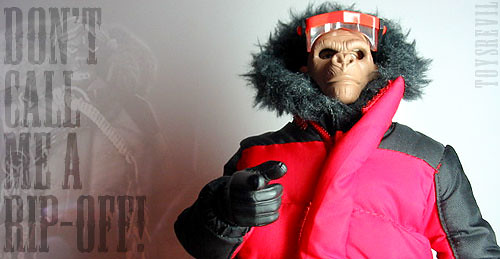
But we have to understand the breakdown of costs for anything so that we can manage expectations of what our efforts will bring. Let me give you a very common example.
*I am invited to a custom show where the gallery wants to highlight a new platform.
I agree to participate in the show.
*The gallery sends me a blank.
*I receive the blank and start conceptualizing ideas.
*I execute my idea, taking however many hours it takes, using my materials. I then pack it up (securely), take it to the post office and ship it back.
*Gallery receives the piece and sets it up for the show run.
*Leading up to the show and afterwards, the blogs talk about the show, the availability of the pieces, the artists involved, etc. People retweet about the show, IG the show’s WIP, and build awareness about this upcoming event. I blog/tweet/IG/FB as well.
*If the piece sells, the gallery sends me my commission, usually 50% of the selling price. For this example let’s say I priced it at $1000. (nice “random” round number cause humans like round numbers). My cut is $500.
*I receive the money.
What did I earn for this effort (not including any brand equity building or other indirect valuations)?
Not $500. Not even $500 minus fixed costs (shipping, materials, gas to the PO, all the incremental costs).
The correct earning is $500 minus (fixed cost) minus (free marketing costs). That’s right. You have to deduct the approx value of what it would have cost you to reach the amount of people that heard about the show whether it be by social media or via a blog post. In any other industry, their profit is determined after all amortization of fixed costs including advertising and marketing. I’ve been on Spankystoke’s page and other blogs dozens and dozens of times, whether it is for a singular release or as a part of a group show, etc. Have I ever paid him a cent? Never. I’ve never paid him any bit of my earnings from any show or event where I have ever sold a piece despite the fact that his involvement helped in the process.
It would be unthinkable that a for-profit business assume and predicate their sales based on free word of mouth and spend zero cents on advertising as their business plan. But, we often see it in this scene and we need to educate ourselves on what things actually cost. It is one of the first steps that an artist can do in order to start themselves on even footing as to managing their expectations and planning their career. By accurately estimating your costs, time and effort, is one of the things that will help you to create easier and freer knowing your constraints from the beginning.
Btw, notice the asterisks above in my list of steps? Those aren’t bullet points. Every step that has an asterisk next to it involved costs of some sort paid out by someone, somewhere in the chain. Those costs tallied up need to be taken out of the end sales price before you can accurately measure *how much that piece was sold for*.
If you were literally add up all the costs down to the fractional penny of what was truly spent in order to facilitate the sale of that one piece, then it would sober you up in a quick second. Let’s take a broad look assuming that the blank production costs are already paid for.
Gallery expenses (rent, overhead, salary, insurance, office supplies, utilities, taxes/FICA, ancillary property fees, storage of blanks, already purchased furniture/pedestals/tools, etc).
Promotional expenses for the show (marketing/design/printing costs related to advertising, opening night expenses such as refreshments, after-hours staff costs, paid advertising, sweat equity promoting).
Artist invitations (sweat equity of correspondence and logistics of inviting artists, shipping and material costs to artists all over the world, etc).
Artist costs (materials, time, labor, shipping/material costs back to gallery *bubble wrap is expensive*, gas, food while you’re working, costs of working from home/studio, utility costs).
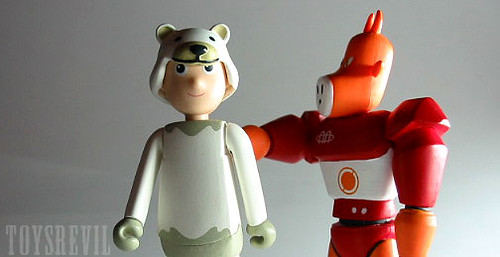
This doesn’t even get into additional luxury costs such as having the artist(s) flown in for the show, giving them accommodations, food/local travel expenses, etc. In addition, this also doesn’t cover the costs of hiring an advertising firm to reach the amount of people that the blogs and social media do for FREE, a cost that should be included.
For those who are reading that have put on shows, you know all of this all too well and the shit adds up quickly. For those who have only participated, it’s easy to overlook all of the incremental costs when we are only fixated on our end of the deal and what we have to pay for. This is why I explain to people that being a creative (or any) entrepreneur can be explained by one easy concept.
“I buy the paperclips.”
If you’ve ever worked in any job, you are there to fulfil a role for your specific talent or skill. Manager, insurance adjuster, hedge fund manager, waitress, retail clerk, etc. But in most cases, you do not have to set up your work in order to do what you were hired to do. The building you drive to every day? Someone else pays the expenses related to that. The desk and chair you sit at? Someone paid for those things, paid for someone to build them so you can work at your desk, on a computer that someone set up the OS for, already connected to the internet that someone set up a intranet for you to be able to login, do what you are paid to do, so you can say...print out a report and then use a paperclip from the office supply room (also paid for) to stick two or more pieces of paper together neatly.
For us? We buy the “paperclips” and everything on up. And it costs a shit ton of money if you think about it.
By this time, you may be wondering how this all ties into what this discourse is all about - the art collectible scene. It ties in tremendously as my conceit for why the scene is at the state that it’s in is because we need to regroup and understand as a community why there are business difficulties and failings that are contributing to the general malaise that we are currently experiencing.
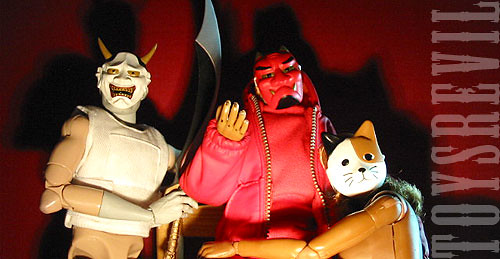
It is too easy to lay blame on the art itself. TOO easy. I can see why the knee-jerk response would be to pin it on the proliferation of licensed goods or collectibles flooding the market that we don’t particularly hold in high personal regard. But art itself is SUBJECTIVE, not OBJECTIVE.
The business aspect of art can be measured fairly empirically by costs and returns whereas the art itself is determined by the individuals and their own eclectic tastes. Mediocre art to one, is brilliant to another.
If the market is flooded with this level of product, it will only serve to illustrate the divide between memorable and forgettable, not "good" or "bad".
Look at the restaurant industry. There a million Hooters and Chili's type restaurants out there, but the restaurants that really put an emphasis on quality, still survive and flourish.
Again, this is not about "good" art vs "bad" art. It's about how memorable and important a piece may be. It may be years after the release but tell me you didn't see Luke Chueh's Possessed piece for the first time and know at that moment that it was something fucking classic already. Right?
If we are to acknowledge that our success as artists and producers are heavily tied into our awareness and adeptness of navigating the business aspect of putting our art out there, then it is a decent start. We need to reboot, understand that what we do is not cheap or easy to do, from a beginning customizer all the way to Coarse, 3A, Kidrobot, and more, then we may be able to work together in efforts that can spread the economic burden across the board - to ensure that can continue doing this longer for those who truly appreciate our efforts and vision.
Some other suggestions as to how we can unify behind some common ideas to help give back and strengthen our industry.
”What is it that we do?”
Get rid of the fucking stupid ass terminologies of “designer vinyl”, “designer toys”, “urban vinyl” etc. All man-made consumer objects are designed. Many of the objects that we create are not “toys” to be played with. The term “urban” is just a nice way to phrase things that come from impoverished or pre-gentrified areas. Not all of what we create is made of vinyl. Failed on all counts. If what we do is create things for people to purchase and collect with strong artistic sensibilities, the closest thing i can think of to describe it would be an art collectible.
This one point has been a sore spot for so many for so long but we have allowed it to continue to perpetuate. I know that almost all of you have had to explain to someone outside of the scene, what exactly it is you “do”. If we cannot easily explain in a few sentences what it is this scene creates, then how do we expect people outside of it to understand? A unified term and explanation for what we do within this industry is needed. Thoughts?
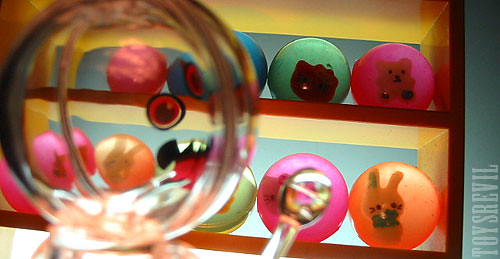
”Help a brother and sister out”
We need to support the retailers by supplying them with product or keep them in mind for our releases. The retailers are our partners (who are spending grips of money as I laid out above) just to be able to have a place to showcase our work. Because of the democratizing aspects of technology (3D Printing), vertical integration of skill-sets (molding/casting/producing at home), globalization via internet (directly connecting with cheaper manufacturers overseas), we are cutting the retailers and middlemen out of the equation. This shouldn’t be the norm. They are our buffers to allow us to focus on what we do best - create.
For example, when a random person walks into myplasticheart and Bikkie or Vince educate them on the objects that they see in the store that they’ve never seen before, that’s one less person that we have to do that for on our own. They are the frontline of education to new audiences that may love what we do, but just haven’t been exposed to it yet.
We are not a mature enough industry to expect that organic growth will adequately serve us. We still need those on the ground to help us sell daily, not just once a month for major shows. If the retailers all go away or have dramatically reduced roles, it will make our lives more difficult as it we will have less time to create, and have to spend more time on ancillary tasks to make up for their absence. I, along with a lot of other artists, have been remiss in remembering to give them products so that we can both share in the successes as well as shoulder the burdens during difficult times.
Put it this way - if you and a your partner were on a deserted island, and you happened to find a stash of clean water to drink - would you keep that to yourself so you could last longer or would you share it with your partner so that both of you could figure a way to survive?
Moving forward, any of my projects that I do will take into account how all involved can benefit so that we can strengthen the community from our collaborative efforts. I encourage my fellow artists out there to do the same if you are able. Give each retailer a special run of something. Call or email them to see how you may be able to work together. I guarantee you that all efforts in this regard would not only be appreciated, but a huge step in the right direction.
”Education”
Lastly, we need more education that will be easily ingested by someone totally not familiar with the scene. Education about the artists, what we create, the companies involved - it is a very daunting thing, the idea of art. A lot of people don’t want to delve into it as they just don’t understand it. We shouldn’t penalize or exclude people who may be interested but don’t know the first place to begin.
I propose that we create a non-profit group or association of retailers, producers and creators that work together and dialogue often to address the issues that inadvertently arise in any nascent industry. Healthy competition is good but when everyone is feeling the effects of the downturn in the scene, it behooves everyone to sit down, figure out a good plan and chart a course. If we don’t address the issues, they will not just organically go away.
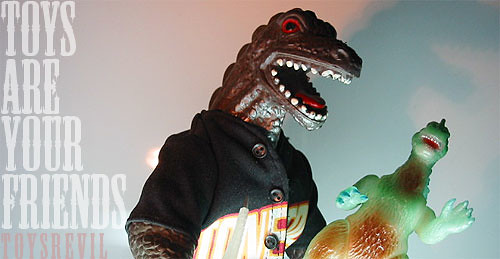
Also, I think that we should be doing more outreach to the younger generations in terms of art awareness and the new advances and ideas in art. Art is no longer hand turkeys or popsicle stick sculptures in school. They are learning about 3D printing, painting on canvases that are not 2D, understanding the concepts of basic 3D sculpting. More opportunities to engage in the next generation of creators and consumers would only strengthen us over the long term. As it stands, the hard core collectors that we had before are slowly leaving the scene with no new blood to replace them. That is natural attrition. Nothing at this point is going to magically just be released and restart the fire. The only closest thing is FUNKO and even they took years and millions of dollars to get to where they are now at. Love or hate them, you can’t deny their hustle.
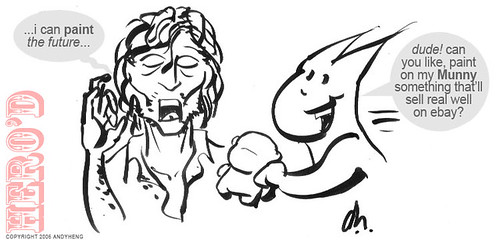
The art hustle is truly a hustle, and not in the street sense. We have to constantly be moving and inquiring and producing. Jermaine Rogers told me one of the best pieces of advice ever - “Be prolific.”
What does that mean? Just keep making shit that you are good with and maybe some of that stuff will stick. Lou Pimentel also told me something very plaintive and powerful as well.
“Do good work”.
I’d like to humbly present my version of it, with all respects to Lou.
“Do good work - together.”
Thanks if you made it down this far. I don’t proclaim to know everything there is about what is going on. I just know what I’ve seen and many may disagree. Whatever may be the case, we just need to get involved and do what we can, when we can. Respects to all, let's see what we can get done. Until then, I'm just another struggling artist trying to make cents.
Jesse Yu.
DISCLAIMERS: Certain line/paragraph breaks here are of my own edit, and not necessary the writer’s own. Additional of toy-imagery posted here are from myself, and not of the writer’s volition.
Just wanted to weigh in on the recent chatter about the state of “designer toys” and the scene in general with a perspective that has been developing over the past few years. I don’t really FB too much but I figure that it would be the best platform to share my insights and opinions with the colleagues on here that this issue is affecting the most. Please keep in mind that all observations, viewpoints and statements below are mine, and that the exercise of me writing this is to hopefully foster growth, change and understanding. Also, there is no TL;DR, sorry.

(FANG TO FUR @ FLABSLAB (circa 2012)
Anyways, I’ve been involved in this scene for a fair number of years now. Many of you know the story of how I was a enthusiast and fan who was working in the corporate world, tried my hand at the creating and then eventually migrated fully to a career as an artist. I’ve participated in a number of shows and projects and have gotten to meet a very large number of the people involved with the scene. Throughout it all though, I’ve been able to retain some of the business sensibility that I honed while working in my previous professions. It is an absolute blessing to be able to straddle that line of art and business, especially now when we are at a crossroads as to where our collective futures lie.

It was a glorious time around 2006-2009, when the collectibles were hitting their stride and the scene was flourishing with release parties, custom shows, convention exclusives and lines for days. Taking their cues from pioneers like Huck, Sket, KOZIK, MAD, JLED, Dalek, Shane Jessup, Tristan Eaton and many many more, lots of artists started to realize that the nascent “toy” scene could be a viable and possibly sustainable source of income.
In the “real” world. As the popularity grew, as the fanbase grew, as the demand grew, so did the businesses to help address the growth. Shops like Kidrobot, Munkyking, ToyTokyo, Wootini, Rotofugi, Myplasticheart, PinkGhost, Dragatomi etc opened their doors to help expose the world-at-large to a new genre of product that combined “art” and “collectible”.
Producers in addition to Kidrobot cropped up like Strangeco and Wheatywheat and Toy2R and many many more to find and produce work by the litany of emerging talent who needed a partner to be able to bring their ideas to life. Online shops like Tenacious Toys, 3DRetro, Frozen Empire Toys etc as well as the dedicated eBay sellers provided even more opportunity for collectors to be able to find the pieces that everyone was clamouring for.
To help spread the word about all of the happenings and releases, fan-originated blogs like Vinyl Pulse, Spankystokes, ToysRevil, Plastic & Plush helped to keep everyone informed and were daily must-reads for everyone. It was a very interesting and exciting time to witness, be a part of and to contribute for everyone.
Fast forward to today. Lots of change. Lots of artists, shops, producers, and blogs have come and gone. Less news. Less hype. Less excitement. Fewer shows. Fewer fans. Abysmal growth and unsuccessful outreach to the public at large. More (warranted) fiscal conservatism in decision making. More difficult decisions made for the sake of survival. I don’t think anyone out there would disagree that the situation for the scene-at-large, if considered empirically, is bleak.
Again, I’m referring to the scene at large. For all of the individual artists who are flourishing or the companies that have been seeing success, they serve as beacons of faint light that we can look to as signs of a pulse. But they too still belong to or emanated from, even by association or focus, the same scene that we are all apart of and trust that I’ve considered their impact in my analysis.
I’ve had many a long discussion over the years with colleagues about what is impeding us in terms of why this scene seemed to peter off or why a subculture has essentially grown and declined in the span of less than one generation of producers and consumers. I’ve had some talks with those that are perennially optimistic (we need their unfettered enthusiasm), some that are puzzled & confused (their understanding of the situation is usually formulated with missing information), those that are extremely pessimistic (I can understand their frustration) and those who are just ambivalent (but for some reason still stick around, not a bad thing!).
It’s through these talks that has given me a broad perspective as to many of the innate issues that have created a systemic breakdown of the core mechanisms that need to be in place in order for this scene, or any industry to at least be economically viable.

To wit, let me just get this out of the way - I am and call myself a pragmatic creative. My work is not for everyone. I am an unabashed capitalist as long as I am happy with with what I create, in my particular style, with pure intent of creating art that I like, with hopes that others might enjoy it. I feel like i need to get this out of the way first - money + art = good thing. In fact, it’s a great thing. You made something that you think is awesome that you like. Someone wants to buy it and if willing, you sell it. You and the person buying it are both happy.
I can understand if people may be uncomfortable with the notion that involving the idea of money somehow may inadvertently sully their artistic integrity but seriously? Get over it. The idea of commoditizing art for sales as being a sell-out move is an amateurish viewpoint at best if you happen to live, eat, work and participate in a functional society. The antiquated notion that art should be strictly created and exist in a plane where its sole purpose is to invoke an ephemeral, philosophical amorphous cultural exchange/awakening does not apply to us. It just doesn’t.
As an artist, being able to create freely as well as being able to create for an economic return is one of the definitive things that fortify our flexibility and ingenuity as resourceful creatives. The two things are not mutually exclusive. If you have ever hung a piece in a gallery, if you have ever sold a piece to another person for the exchange of money, if you have ever tweeted or posted about your work in any type of publication acknowledging the existence of a new work that you have made - you are in business and with that, comes the need for the acknowledgment of how critical and important it is to incorporate that mentality and acceptance into your career.
Once that happens, then true progress can be individually made by the artist to be smarter about the decisions you are faced with knowing that your desire is to continue on in a tenuous industry. That mentality and approach is just the precursor to being ready to participate. The real issues are more expansive once you get to the dance.

Everyone knows that our scene is essentially a cottage industry of creatives, enthusiasts and producers who loosely came together to form this scene. We cobbled together a space where like-minded people from all over the world rallied around each other and revelled in the work. Pieces were being made, money was being made, and artists were getting known. This was no Hasbro. This wasn’t Mattel. It was people like you and me, making cool shit that was blowing our minds. And with it came money and opportunity and (to very loosely paraphrase Super7’s motto) the idea that we could make the stuff we always wanted but no one made. But since this scene was predicated on the cool-idea-how-do-we-make-this type mentality, the way we have done our accounting for “success” has been flat out wrong.

Success in a business is of course measured by earnings. But there are other things to consider that are almost equally important, such as equity and value. As artists, it is imperative that we reconcile what we are creating with a sound business model. Furthermore, we need to be acutely aware of how to assign value to what we create and understand what we get back. We’ve all been in that situation where we have no idea how to price our work for a show. I’ve been there. It sucks. We all put in tons of hours and spend money on materials and shipping and then we worry that if we price ourselves too high, we run the risk of it not selling. We convince ourselves that pricing it to sell at a lower price is better than pricing it high and potentially having it unsold. We’ve got bills, man. We have rent due. Our cars break down. Our pets have vet bills and I might have an unexpected expense. I absolutely get it, I’ve been there and will be there again. Never once have I ever heard of a colleague bitching about not earning enough because they are trying to buy a Lamborghini. We just want to make a living at doing what we love, have passion for and hopefully not starve.

But we have to understand the breakdown of costs for anything so that we can manage expectations of what our efforts will bring. Let me give you a very common example.
*I am invited to a custom show where the gallery wants to highlight a new platform.
I agree to participate in the show.
*The gallery sends me a blank.
*I receive the blank and start conceptualizing ideas.
*I execute my idea, taking however many hours it takes, using my materials. I then pack it up (securely), take it to the post office and ship it back.
*Gallery receives the piece and sets it up for the show run.
*Leading up to the show and afterwards, the blogs talk about the show, the availability of the pieces, the artists involved, etc. People retweet about the show, IG the show’s WIP, and build awareness about this upcoming event. I blog/tweet/IG/FB as well.
*If the piece sells, the gallery sends me my commission, usually 50% of the selling price. For this example let’s say I priced it at $1000. (nice “random” round number cause humans like round numbers). My cut is $500.
*I receive the money.
What did I earn for this effort (not including any brand equity building or other indirect valuations)?
Not $500. Not even $500 minus fixed costs (shipping, materials, gas to the PO, all the incremental costs).
The correct earning is $500 minus (fixed cost) minus (free marketing costs). That’s right. You have to deduct the approx value of what it would have cost you to reach the amount of people that heard about the show whether it be by social media or via a blog post. In any other industry, their profit is determined after all amortization of fixed costs including advertising and marketing. I’ve been on Spankystoke’s page and other blogs dozens and dozens of times, whether it is for a singular release or as a part of a group show, etc. Have I ever paid him a cent? Never. I’ve never paid him any bit of my earnings from any show or event where I have ever sold a piece despite the fact that his involvement helped in the process.
It would be unthinkable that a for-profit business assume and predicate their sales based on free word of mouth and spend zero cents on advertising as their business plan. But, we often see it in this scene and we need to educate ourselves on what things actually cost. It is one of the first steps that an artist can do in order to start themselves on even footing as to managing their expectations and planning their career. By accurately estimating your costs, time and effort, is one of the things that will help you to create easier and freer knowing your constraints from the beginning.
Btw, notice the asterisks above in my list of steps? Those aren’t bullet points. Every step that has an asterisk next to it involved costs of some sort paid out by someone, somewhere in the chain. Those costs tallied up need to be taken out of the end sales price before you can accurately measure *how much that piece was sold for*.
If you were literally add up all the costs down to the fractional penny of what was truly spent in order to facilitate the sale of that one piece, then it would sober you up in a quick second. Let’s take a broad look assuming that the blank production costs are already paid for.
Gallery expenses (rent, overhead, salary, insurance, office supplies, utilities, taxes/FICA, ancillary property fees, storage of blanks, already purchased furniture/pedestals/tools, etc).
Promotional expenses for the show (marketing/design/printing costs related to advertising, opening night expenses such as refreshments, after-hours staff costs, paid advertising, sweat equity promoting).
Artist invitations (sweat equity of correspondence and logistics of inviting artists, shipping and material costs to artists all over the world, etc).
Artist costs (materials, time, labor, shipping/material costs back to gallery *bubble wrap is expensive*, gas, food while you’re working, costs of working from home/studio, utility costs).

This doesn’t even get into additional luxury costs such as having the artist(s) flown in for the show, giving them accommodations, food/local travel expenses, etc. In addition, this also doesn’t cover the costs of hiring an advertising firm to reach the amount of people that the blogs and social media do for FREE, a cost that should be included.
For those who are reading that have put on shows, you know all of this all too well and the shit adds up quickly. For those who have only participated, it’s easy to overlook all of the incremental costs when we are only fixated on our end of the deal and what we have to pay for. This is why I explain to people that being a creative (or any) entrepreneur can be explained by one easy concept.
If you’ve ever worked in any job, you are there to fulfil a role for your specific talent or skill. Manager, insurance adjuster, hedge fund manager, waitress, retail clerk, etc. But in most cases, you do not have to set up your work in order to do what you were hired to do. The building you drive to every day? Someone else pays the expenses related to that. The desk and chair you sit at? Someone paid for those things, paid for someone to build them so you can work at your desk, on a computer that someone set up the OS for, already connected to the internet that someone set up a intranet for you to be able to login, do what you are paid to do, so you can say...print out a report and then use a paperclip from the office supply room (also paid for) to stick two or more pieces of paper together neatly.
For us? We buy the “paperclips” and everything on up. And it costs a shit ton of money if you think about it.
By this time, you may be wondering how this all ties into what this discourse is all about - the art collectible scene. It ties in tremendously as my conceit for why the scene is at the state that it’s in is because we need to regroup and understand as a community why there are business difficulties and failings that are contributing to the general malaise that we are currently experiencing.

It is too easy to lay blame on the art itself. TOO easy. I can see why the knee-jerk response would be to pin it on the proliferation of licensed goods or collectibles flooding the market that we don’t particularly hold in high personal regard. But art itself is SUBJECTIVE, not OBJECTIVE.
The business aspect of art can be measured fairly empirically by costs and returns whereas the art itself is determined by the individuals and their own eclectic tastes. Mediocre art to one, is brilliant to another.
If the market is flooded with this level of product, it will only serve to illustrate the divide between memorable and forgettable, not "good" or "bad".
Look at the restaurant industry. There a million Hooters and Chili's type restaurants out there, but the restaurants that really put an emphasis on quality, still survive and flourish.
Again, this is not about "good" art vs "bad" art. It's about how memorable and important a piece may be. It may be years after the release but tell me you didn't see Luke Chueh's Possessed piece for the first time and know at that moment that it was something fucking classic already. Right?
If we are to acknowledge that our success as artists and producers are heavily tied into our awareness and adeptness of navigating the business aspect of putting our art out there, then it is a decent start. We need to reboot, understand that what we do is not cheap or easy to do, from a beginning customizer all the way to Coarse, 3A, Kidrobot, and more, then we may be able to work together in efforts that can spread the economic burden across the board - to ensure that can continue doing this longer for those who truly appreciate our efforts and vision.
Some other suggestions as to how we can unify behind some common ideas to help give back and strengthen our industry.
Get rid of the fucking stupid ass terminologies of “designer vinyl”, “designer toys”, “urban vinyl” etc. All man-made consumer objects are designed. Many of the objects that we create are not “toys” to be played with. The term “urban” is just a nice way to phrase things that come from impoverished or pre-gentrified areas. Not all of what we create is made of vinyl. Failed on all counts. If what we do is create things for people to purchase and collect with strong artistic sensibilities, the closest thing i can think of to describe it would be an art collectible.
This one point has been a sore spot for so many for so long but we have allowed it to continue to perpetuate. I know that almost all of you have had to explain to someone outside of the scene, what exactly it is you “do”. If we cannot easily explain in a few sentences what it is this scene creates, then how do we expect people outside of it to understand? A unified term and explanation for what we do within this industry is needed. Thoughts?

”Help a brother and sister out”
We need to support the retailers by supplying them with product or keep them in mind for our releases. The retailers are our partners (who are spending grips of money as I laid out above) just to be able to have a place to showcase our work. Because of the democratizing aspects of technology (3D Printing), vertical integration of skill-sets (molding/casting/producing at home), globalization via internet (directly connecting with cheaper manufacturers overseas), we are cutting the retailers and middlemen out of the equation. This shouldn’t be the norm. They are our buffers to allow us to focus on what we do best - create.
For example, when a random person walks into myplasticheart and Bikkie or Vince educate them on the objects that they see in the store that they’ve never seen before, that’s one less person that we have to do that for on our own. They are the frontline of education to new audiences that may love what we do, but just haven’t been exposed to it yet.
We are not a mature enough industry to expect that organic growth will adequately serve us. We still need those on the ground to help us sell daily, not just once a month for major shows. If the retailers all go away or have dramatically reduced roles, it will make our lives more difficult as it we will have less time to create, and have to spend more time on ancillary tasks to make up for their absence. I, along with a lot of other artists, have been remiss in remembering to give them products so that we can both share in the successes as well as shoulder the burdens during difficult times.
Put it this way - if you and a your partner were on a deserted island, and you happened to find a stash of clean water to drink - would you keep that to yourself so you could last longer or would you share it with your partner so that both of you could figure a way to survive?
Moving forward, any of my projects that I do will take into account how all involved can benefit so that we can strengthen the community from our collaborative efforts. I encourage my fellow artists out there to do the same if you are able. Give each retailer a special run of something. Call or email them to see how you may be able to work together. I guarantee you that all efforts in this regard would not only be appreciated, but a huge step in the right direction.
Lastly, we need more education that will be easily ingested by someone totally not familiar with the scene. Education about the artists, what we create, the companies involved - it is a very daunting thing, the idea of art. A lot of people don’t want to delve into it as they just don’t understand it. We shouldn’t penalize or exclude people who may be interested but don’t know the first place to begin.
I propose that we create a non-profit group or association of retailers, producers and creators that work together and dialogue often to address the issues that inadvertently arise in any nascent industry. Healthy competition is good but when everyone is feeling the effects of the downturn in the scene, it behooves everyone to sit down, figure out a good plan and chart a course. If we don’t address the issues, they will not just organically go away.

Also, I think that we should be doing more outreach to the younger generations in terms of art awareness and the new advances and ideas in art. Art is no longer hand turkeys or popsicle stick sculptures in school. They are learning about 3D printing, painting on canvases that are not 2D, understanding the concepts of basic 3D sculpting. More opportunities to engage in the next generation of creators and consumers would only strengthen us over the long term. As it stands, the hard core collectors that we had before are slowly leaving the scene with no new blood to replace them. That is natural attrition. Nothing at this point is going to magically just be released and restart the fire. The only closest thing is FUNKO and even they took years and millions of dollars to get to where they are now at. Love or hate them, you can’t deny their hustle.

The art hustle is truly a hustle, and not in the street sense. We have to constantly be moving and inquiring and producing. Jermaine Rogers told me one of the best pieces of advice ever - “Be prolific.”
What does that mean? Just keep making shit that you are good with and maybe some of that stuff will stick. Lou Pimentel also told me something very plaintive and powerful as well.
“Do good work”.
I’d like to humbly present my version of it, with all respects to Lou.
“Do good work - together.”
Thanks if you made it down this far. I don’t proclaim to know everything there is about what is going on. I just know what I’ve seen and many may disagree. Whatever may be the case, we just need to get involved and do what we can, when we can. Respects to all, let's see what we can get done. Until then, I'm just another struggling artist trying to make cents.
Jesse Yu.










